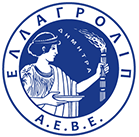- +30 213 003 7600
- +30 213 003 7600
- info@hellagrolip.com
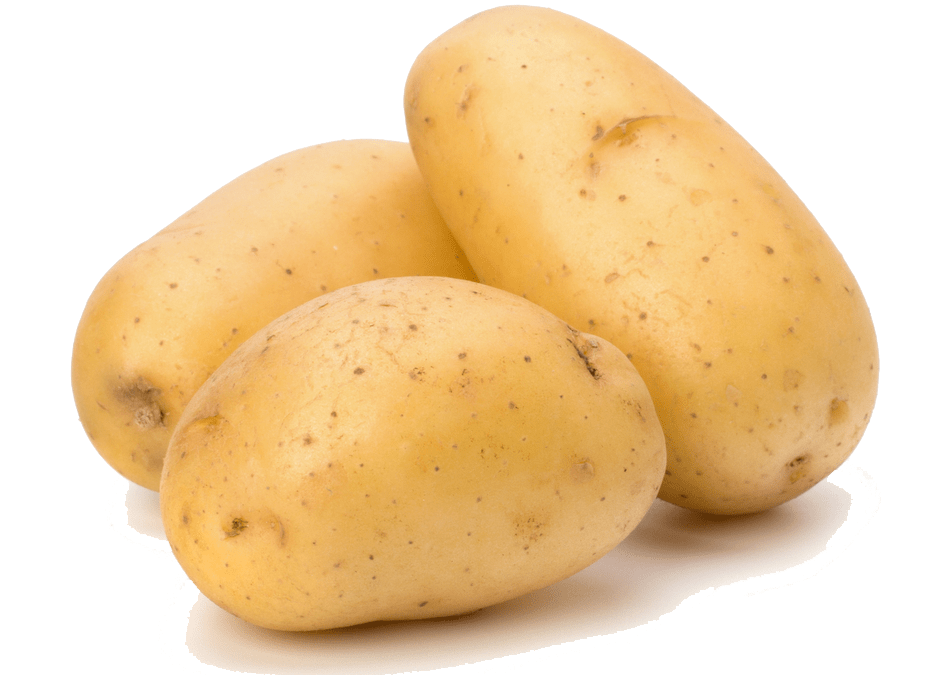
Potatoes thrive in deep and fertile soils of medium and fine texture, with adequate drainage and ventilation. Sandy loam to slit loam soils with an abundance of organic matter are considered ideal for high yields and quality produce.
Poor sandy soils which do not retain sufficient moisture are ideal for early varieties, but have high fertilization and irrigation requirements.
With regard to acidity, crops develop without any particular issues in soils with a pH between 4.5 – 7.5, the ideal range being between 5.5 – 6.
Compared to other crops, potatoes have a characteristically high production of plant mass in a short period of time.
In order to achieve high yields, sufficient nutrients are necessary throughout the biological cycle of the crop. Potatoes have increased nutritional requirement so as to fully cover the growth of the roots and shoots, as well as the formation and augmentation of the tubers.
| Annual nutritional needs to produce 5 tons of potatoes (kg/ha.) | |||||
|---|---|---|---|---|---|
| Type | Nitrogen
(N) |
Phosphorus
(P2O5) |
Potassium
(K2O) |
Magnesium
(MgO) |
Sulfur
(S) |
| Underground | 70 | 36 | 110 | 25 | 15 |
| Overground | 180 | 84 | 260 | 45 | 25 |
| Total | 250 | 120 | 370 | 70 | 40 |

Immediately after sprouting, the shoots and leaves develop on the above-ground part of the plant, while the roots and stolons develop in the soil, where the tubers will be formed on the latter.
During this stage, the primary goal is the formation of a rich and robust root system, which will supply the plant with nutrients and water and meet the high nutritional requirements of the tubers, at the later stages of cultivation.
At this stage, the goal is the earliest possible growth of a rich leaf area, which will allow for the production of abundant nutrients, which will in turn migrate to the stolons and form the tubers.
The nutritional state of the crop at this stage has a determining effect on the onset of tuber formation and the final produce.
(N) – Nitrogen stimulates rapid growth, increases the number of leaves, and boosts their photosynthetic activity. An excessive supply of Nitrogen should be avoided at this stage, because it leads to excessive vegetative growth, whilst delaying the onset of tuber formation and reducing the production.
(P) – Phosphorus is the most significant nutrient during this period. It boosts the growth of the root system and leads to early sprouting. An adequate supply of the crop with Phosphorus speeds up the onset of tuber formation and increases the yields.
(Κ) – Potassium boosts the growth of the roots and leaves and regulates the water balance inside the plant, protecting the crop from diseases and adverse weather conditions.
(Ca/Mg) – Calcium is required for the growth of the roots, the leaves, and the developing tissue, and helps the plant to overcome any environmental stress. Magnesium increases photosynthesis, contributes to the production of carbohydrates, and boosts their migration to the stolons so that the tubers can form.

The process of tuber formation begins at this time. The products of photosynthesis on the leaves migrate to the stolons, whose ends begin to enlarge.
(Ν) – Nitrogen sustains the strong photosynthetic activity of the leaves, which is required for the formation of the tubers. Adding Nitrogen during the process of tuber formation should be avoided, as it prolongs it at the expense of production, and reduces the number of stolons which will develop into tubers.
(P) – Phosphorus affects tuber formation more than any other nutrient. It is the key element which determines the number of tubers which will form and continue to grow.
(Κ), (Mg) – Potassium and Magnesium improve the photosynthetic capacity of the leaves and increase the production of carbohydrates, as well as participate in the migration of the latter to the forming tubers.

At this stage, the proteins and carbohydrates produced in the leaves, water, and a number of inorganic nutrients which are already found in the plant, as well as those taken up from the soil, migrate to the tubers and boost their size and weight increase.
At this particular stage, potatoes exhibit their highest requirements in nutrients and water than at any other stage.
(Ν) – Nitrogen contributes significantly to the growth of the tubers. It takes part in the production of proteins which are stored in the tubers, and it also extends the lifespan of the leaves, which constitute the main source of nutrition for the tubers.
(P) – During this time of filling, Phosphorus has a determining effect on the final size of the tubers. It takes part in the production of storage substances in the above-ground part of the plant, while various quantities of Phosphorus migrate from the plants to the tubers.
(Κ) – During the tuber growth phase, Potassium is the element absorbed at the fastest rate and in the largest quantities by the crop. It contributes to the production of carbohydrates in the leaves and their migration to the tubers. Adequate supply of Potassium during this period is decisive for the height and quality of the final produce.
(Mg/Ca) – Magnesium and Calcium have a determining effect on the development of the tubers. Magnesium increases photosynthetic activity and boosts the migration of carbohydrates to the tubers. Calcium contributes to the proper formation of the tubers, protects them from natural problems, and promotes the healthy development of the skin.

At this stage, the tubers have reached their full size, and they continue to increase in weight until harvest by accumulating large quantities of starch.
During this period, Nitrogen (Ν) quantities should remain in low levels. Too much Nitrogen at this stage will increase the percentage of proteins, delay the production, and lower the quality of the tubers. On the contrary, an adequate supply of Potassium (Κ) will increase starch accumulation in the tubers, optimize their qualitative characteristics, and – combined with Phosphorus (P) – improve the quality and thickness of the skin and prolong storability post-harvest.
The goal is to fulfill the requirements in those nutrients which are necessary for the development of a robust and rich root system, and for adequate and early sprouting which will promote tuber formation.
It is crucial that the Phosphorus and Potassium quantities provided during basic fertilization cover at least 2/3 of the overall requirements, as these nutrients must be available to the crop early on, in order for it to produce high yields. On the contrary, Nitrogen supply should not exceed 30 – 40% of the overall requirements of the crop during basic fertilization.
The supply at this stage is:
In basic fertilization, Nitrogen should be supplied in its Ammoniacal form, because the absorption rate of the crop at the early stages is slow, and Nitric Nitrogen (ΝΟ3-) exhibits great losses, whilst antagonizing Phosphorus uptake at the same time.
The fertilizers recommended for use are stabilized fertilizers (NutrActive), as they protect Ammoniacal Nitrogen and ensure crop growth for longer periods of time, or complex multi-nutrient fertilizers with nanopolymer technology (Ωmega fert), which prevent the immobilization of nutrients in the soil, ensuring the adequate supply of plants with easily assimilable components, in all periods of high demand.
| Potato fertilizing | ||
|---|---|---|
| Type of Fertilizer | Stage of application | Dosage* (kg/ha) |
NutrActive special 12-12-17 (+30) +2MgO +TE | Basic fertilization | 1000 – 1600 kg |
* The dosages mentioned are indicative. Regarding the fertilizing of crops, one should take into account the advice of local agronomists.
The goal is the formation of a rich leaf area, which will contribute to a healthy tuber formation and a thicker fruit later on.
It is recommended that Nitrogen and Calcium be applied early, once the crop has sprouted, while Phosphorus should be added later, before the onset of tuber formation.
The supply at this stage is:
● ⅓ of Nitrogen (Ν)
● ⅓ of Phosphorus (P)
● ½ of Magnesium (Mg)
● ½ of Calcium (Ca)
The use of Nitrogen fertilizers with nanopolymer techmology or slow-realize Ammoniacal Nitrogen (Ωmega 26N – NutrActive), or complex multi-nutrient (Complefert) fertilizers is recommended, as they ensure the even growth of both the above-ground and underground parts of the plants and promote a healthy tuber formation. Part of the required Nitrogen and Potassium can be supplied through the irrigation system, in the forms of Calcium Nitrate or Potassium Sulphate, thus covering the needs of the crop in Calcium and Potassium.
The goal of the second application of top fertilization is to cover the high nutritional requirements of the crop, in order for the tubers to increase in size and weight. The application should take place prior to the completion of tuber formation, and the emphasis should be on Nitrogen and Potassium.
The supply at this stage is:
The use of the Nitrogenous-Potassic fertilizers of the Complefert series is recommended, as they are highly soluble and supply the crop with fully assimilable forms of Ν, P, K, S, Mg, Trace Elements, as well as ensure the increased size and weight of the tubers.
| Potato fertilizing | ||
|---|---|---|
| Type of Fertilizer | Stage of application | Dosage* (kg/ha) |
NutrActive 27N 27-0-0 (+27) | Immediately after germination | 250 – 500 kg |
Complefert CalMag 8-12-18 (+35) +3MgO +3CaO +TE | At the beginning of tubers growth | 400 – 500 kg |
* The dosages mentioned are indicative. Regarding the fertilizing of crops, one should take into account the advice of local agronomists.
| Basic fertilization | Immediately after germination | At the beginning of tubers growth | |
|---|---|---|---|
| Potato | Complefert® Ωmega fert® NutrActive® |
NutrActive® Novacan stabil® Fertammon® Nitrocan® |
Complefert® |
Basic fertilizers
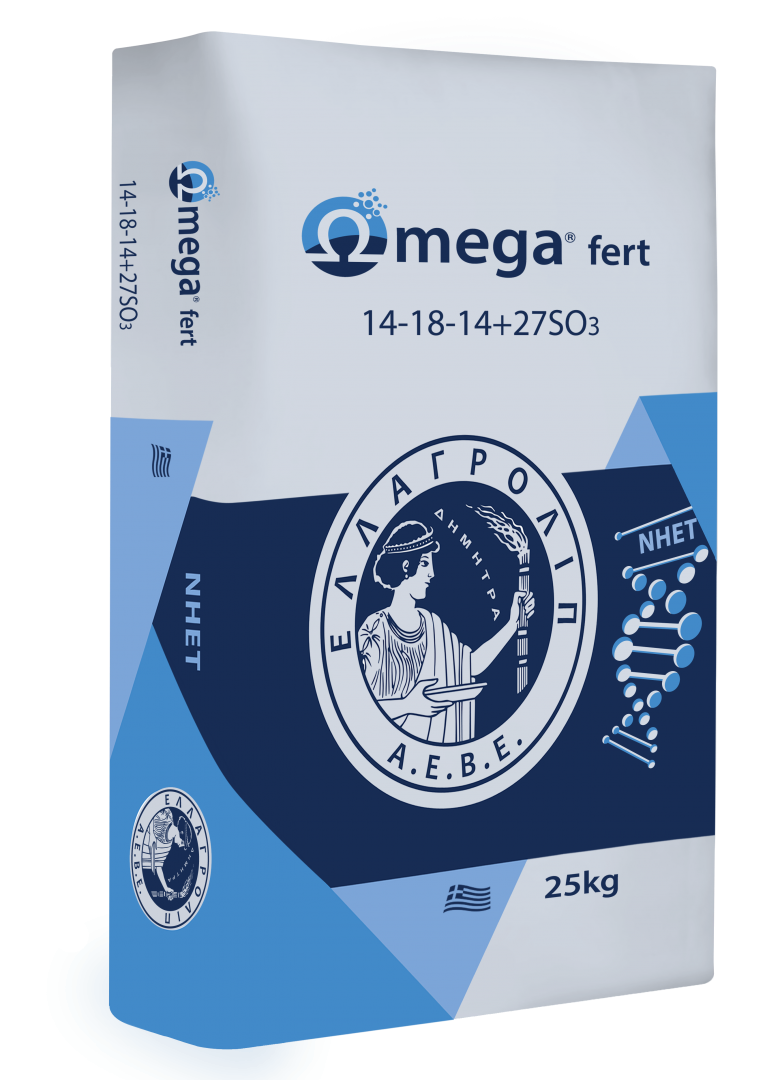
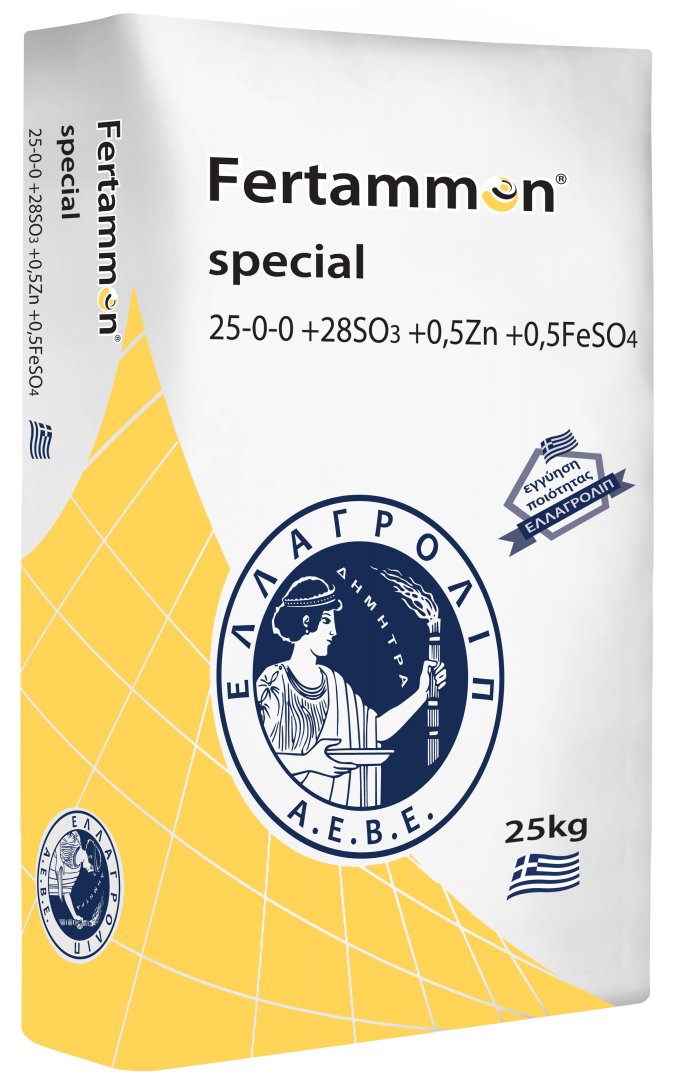
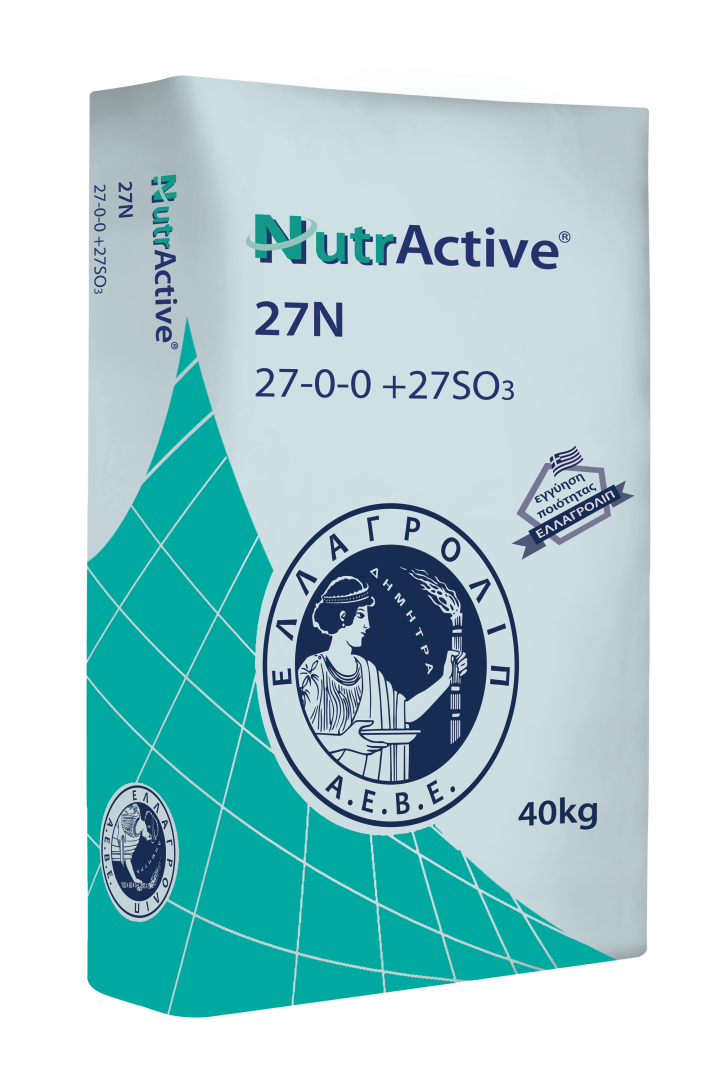
Top-dressing fertilizers

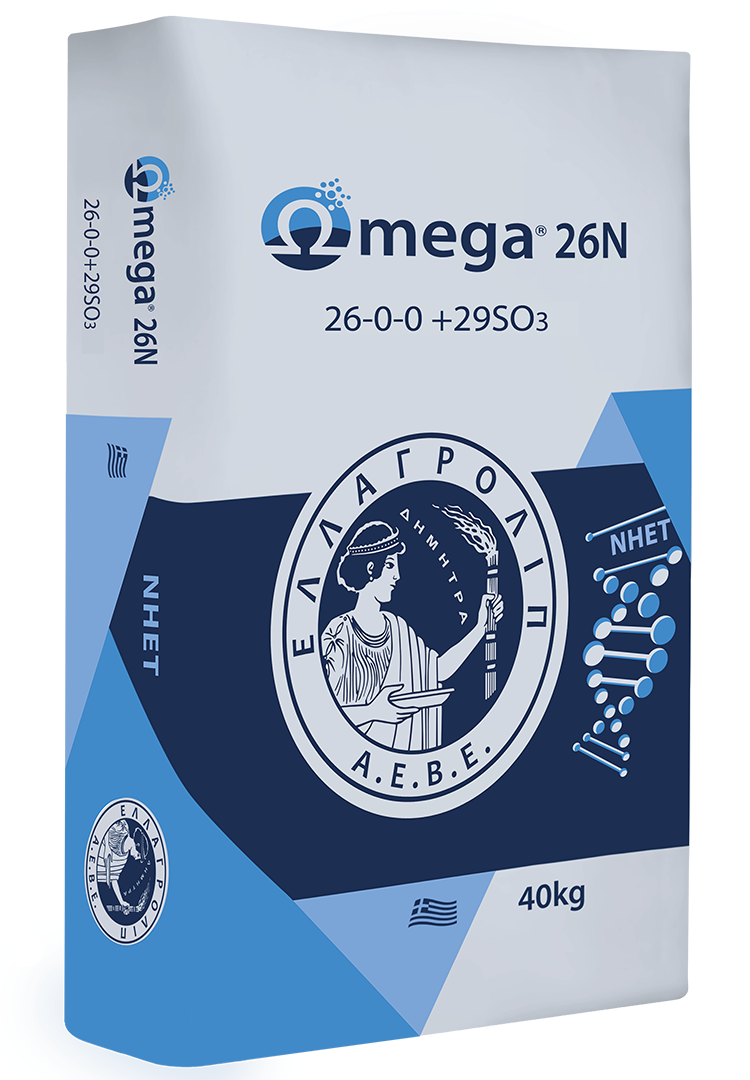

Potatoes thrive in deep and fertile soils of medium and fine texture, with adequate drainage and ventilation. Sandy loam to slit loam soils with an abundance of organic matter are considered ideal for high yields and quality produce.
Poor sandy soils which do not retain sufficient moisture are ideal for early varieties, but have high fertilization and irrigation requirements.
With regard to acidity, crops develop without any particular issues in soils with a pH between 4.5 – 7.5, the ideal range being between 5.5 – 6.
Compared to other crops, potatoes have a characteristically high production of plant mass in a short period of time.
In order to achieve high yields, sufficient nutrients are necessary throughout the biological cycle of the crop. Potatoes have increased nutritional requirement so as to fully cover the growth of the roots and shoots, as well as the formation and augmentation of the tubers.
| Annual nutritional needs to produce 5 tons of potatoes (kg/ha.) | |||||
|---|---|---|---|---|---|
| Type | Nitrogen
(N) |
Phosphorus
(P2O5) |
Potassium
(K2O) |
Magnesium
(MgO) |
Sulfur
(S) |
| Underground | 70 | 36 | 110 | 25 | 15 |
| Overground | 180 | 84 | 260 | 45 | 25 |
| Total | 250 | 120 | 370 | 70 | 40 |

Immediately after sprouting, the shoots and leaves develop on the above-ground part of the plant, while the roots and stolons develop in the soil, where the tubers will be formed on the latter.
During this stage, the primary goal is the formation of a rich and robust root system, which will supply the plant with nutrients and water and meet the high nutritional requirements of the tubers, at the later stages of cultivation.
At this stage, the goal is the earliest possible growth of a rich leaf area, which will allow for the production of abundant nutrients, which will in turn migrate to the stolons and form the tubers.
The nutritional state of the crop at this stage has a determining effect on the onset of tuber formation and the final produce.
(N) – Nitrogen stimulates rapid growth, increases the number of leaves, and boosts their photosynthetic activity. An excessive supply of Nitrogen should be avoided at this stage, because it leads to excessive vegetative growth, whilst delaying the onset of tuber formation and reducing the production.
(P) – Phosphorus is the most significant nutrient during this period. It boosts the growth of the root system and leads to early sprouting. An adequate supply of the crop with Phosphorus speeds up the onset of tuber formation and increases the yields.
(Κ) – Potassium boosts the growth of the roots and leaves and regulates the water balance inside the plant, protecting the crop from diseases and adverse weather conditions.
(Ca/Mg) – Calcium is required for the growth of the roots, the leaves, and the developing tissue, and helps the plant to overcome any environmental stress. Magnesium increases photosynthesis, contributes to the production of carbohydrates, and boosts their migration to the stolons so that the tubers can form.

The process of tuber formation begins at this time. The products of photosynthesis on the leaves migrate to the stolons, whose ends begin to enlarge.
(Ν) – Nitrogen sustains the strong photosynthetic activity of the leaves, which is required for the formation of the tubers. Adding Nitrogen during the process of tuber formation should be avoided, as it prolongs it at the expense of production, and reduces the number of stolons which will develop into tubers.
(P) – Phosphorus affects tuber formation more than any other nutrient. It is the key element which determines the number of tubers which will form and continue to grow.
(Κ), (Mg) – Potassium and Magnesium improve the photosynthetic capacity of the leaves and increase the production of carbohydrates, as well as participate in the migration of the latter to the forming tubers.

At this stage, the proteins and carbohydrates produced in the leaves, water, and a number of inorganic nutrients which are already found in the plant, as well as those taken up from the soil, migrate to the tubers and boost their size and weight increase.
At this particular stage, potatoes exhibit their highest requirements in nutrients and water than at any other stage.
(Ν) – Nitrogen contributes significantly to the growth of the tubers. It takes part in the production of proteins which are stored in the tubers, and it also extends the lifespan of the leaves, which constitute the main source of nutrition for the tubers.
(P) – During this time of filling, Phosphorus has a determining effect on the final size of the tubers. It takes part in the production of storage substances in the above-ground part of the plant, while various quantities of Phosphorus migrate from the plants to the tubers.
(Κ) – During the tuber growth phase, Potassium is the element absorbed at the fastest rate and in the largest quantities by the crop. It contributes to the production of carbohydrates in the leaves and their migration to the tubers. Adequate supply of Potassium during this period is decisive for the height and quality of the final produce.
(Mg/Ca) – Magnesium and Calcium have a determining effect on the development of the tubers. Magnesium increases photosynthetic activity and boosts the migration of carbohydrates to the tubers. Calcium contributes to the proper formation of the tubers, protects them from natural problems, and promotes the healthy development of the skin.

At this stage, the tubers have reached their full size, and they continue to increase in weight until harvest by accumulating large quantities of starch.
During this period, Nitrogen (Ν) quantities should remain in low levels. Too much Nitrogen at this stage will increase the percentage of proteins, delay the production, and lower the quality of the tubers. On the contrary, an adequate supply of Potassium (Κ) will increase starch accumulation in the tubers, optimize their qualitative characteristics, and – combined with Phosphorus (P) – improve the quality and thickness of the skin and prolong storability post-harvest.
The goal is to fulfill the requirements in those nutrients which are necessary for the development of a robust and rich root system, and for adequate and early sprouting which will promote tuber formation.
It is crucial that the Phosphorus and Potassium quantities provided during basic fertilization cover at least 2/3 of the overall requirements, as these nutrients must be available to the crop early on, in order for it to produce high yields. On the contrary, Nitrogen supply should not exceed 30 – 40% of the overall requirements of the crop during basic fertilization.
The supply at this stage is:
In basic fertilization, Nitrogen should be supplied in its Ammoniacal form, because the absorption rate of the crop at the early stages is slow, and Nitric Nitrogen (ΝΟ3-) exhibits great losses, whilst antagonizing Phosphorus uptake at the same time.
The fertilizers recommended for use are stabilized fertilizers (NutrActive), as they protect Ammoniacal Nitrogen and ensure crop growth for longer periods of time, or complex multi-nutrient fertilizers with nanopolymer technology (Ωmega fert), which prevent the immobilization of nutrients in the soil, ensuring the adequate supply of plants with easily assimilable components, in all periods of high demand.
| Potato fertilizing | ||
|---|---|---|
| Type of Fertilizer | Stage of application | Dosage* (kg/ha) |
NutrActive special 12-12-17 (+30) +2MgO +TE | Basic fertilization | 1000 – 1600 kg |
* The dosages mentioned are indicative. Regarding the fertilizing of crops, one should take into account the advice of local agronomists.
The goal is the formation of a rich leaf area, which will contribute to a healthy tuber formation and a thicker fruit later on.
It is recommended that Nitrogen and Calcium be applied early, once the crop has sprouted, while Phosphorus should be added later, before the onset of tuber formation.
The supply at this stage is:
● ⅓ of Nitrogen (Ν)
● ⅓ of Phosphorus (P)
● ½ of Magnesium (Mg)
● ½ of Calcium (Ca)
The use of Nitrogen fertilizers with nanopolymer techmology or slow-realize Ammoniacal Nitrogen (Ωmega 26N – NutrActive), or complex multi-nutrient (Complefert) fertilizers is recommended, as they ensure the even growth of both the above-ground and underground parts of the plants and promote a healthy tuber formation. Part of the required Nitrogen and Potassium can be supplied through the irrigation system, in the forms of Calcium Nitrate or Potassium Sulphate, thus covering the needs of the crop in Calcium and Potassium.
The goal of the second application of top fertilization is to cover the high nutritional requirements of the crop, in order for the tubers to increase in size and weight. The application should take place prior to the completion of tuber formation, and the emphasis should be on Nitrogen and Potassium.
The supply at this stage is:
The use of the Nitrogenous-Potassic fertilizers of the Complefert series is recommended, as they are highly soluble and supply the crop with fully assimilable forms of Ν, P, K, S, Mg, Trace Elements, as well as ensure the increased size and weight of the tubers.
| Potato fertilizing | ||
|---|---|---|
| Type of Fertilizer | Stage of application | Dosage* (kg/ha) |
NutrActive 27N 27-0-0 (+27) | Immediately after germination | 250 – 500 kg |
Complefert CalMag 8-12-18 (+35) +3MgO +3CaO +TE | At the beginning of tubers growth | 400 – 500 kg |
* The dosages mentioned are indicative. Regarding the fertilizing of crops, one should take into account the advice of local agronomists.
| Basic fertilization | Immediately after germination | At the beginning of tubers growth | |
|---|---|---|---|
| Potato | Complefert® Ωmega fert® NutrActive® |
NutrActive® Novacan stabil® Fertammon® Nitrocan® |
Complefert® |
Basic fertilizers



Top-dressing fertilizers



